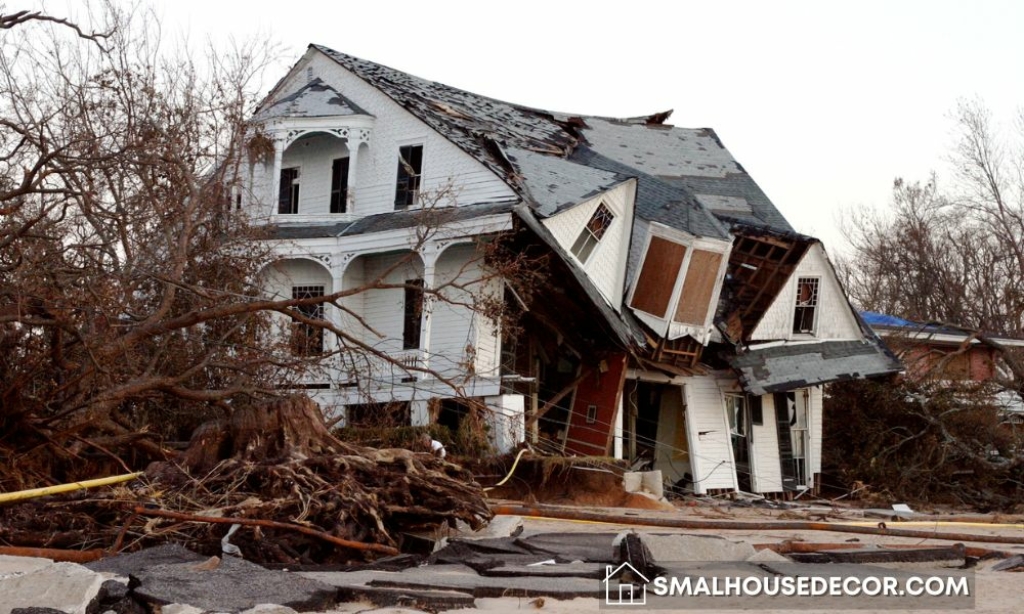As hurricane season approaches, designing your home for resilience against the elements is more important than ever. With wind gusts and flooding posing a significant threat to homes in affected areas, it’s critical to take precautions that could save you thousands of dollars in damage repairs.
From reinforcing windows and doors to choosing the right location and building materials, this article will provide you with essential considerations that can help keep your family safe during a storm. So grab a cup of coffee and settle in as we explore crucial steps towards making your home hurricane-ready!

Windows and Doors: The First Line of Defense Against Wind and Water
When it comes to designing your home for hurricane resilience, one of the most important considerations is ensuring that your windows and doors are up to the task. These openings in your home provide the first line of defense against high winds and water intrusion during a storm. To start with, you should consider installing impact-resistant windows and doors. These are specially designed to withstand strong winds and flying debris without shattering or breaking.
They can be made from materials like laminated glass or reinforced plastic, which help prevent damage even if they do get hit by an object. You can find out more and get help choosing the right impact-resistant windows and doors for your home by consulting with a local building contractor or window and door specialist.
By investing in impact-resistant materials, proper sealing techniques, and additional protective coverings where necessary, you’ll have peace of mind knowing that you’ve done everything possible to keep yourself safe during severe weather events.
Location, Location, Location: Picking the Right Place to Ride Out the Storm
Picking the right place to ride out a storm can mean the difference between staying safe and suffering catastrophic damage. First and foremost, you’ll want to avoid building in areas that are prone to flooding or storm surges. These low-lying regions are at high risk during hurricanes and could leave you stranded without power or resources.
You’ll also want to consider the terrain of the area where you plan on building. Flat land with no natural barriers makes your home more susceptible to high winds gusting through. Look for locations with natural windbreaks such as hills or trees that can offer some protection from strong winds. Additionally, take into account any nearby bodies of water like rivers, lakes, or oceans. Living close by can be beautiful but they pose a significant threat when severe weather strikes.
Also Read: Weather Safety: 10 Tips to Prepare against a Storm
Home Construction: Weaker Structures Won’t Stand a Chance Against High Winds
When designing your home for hurricane resilience, it is essential to consider the construction of your property. Strong winds and heavy rain can cause significant damage to homes that are not built with the proper materials and techniques.
One crucial consideration when building a hurricane-resistant home is the use of reinforced concrete or masonry walls. These materials can withstand high winds and flying debris much better than wood frame structures.
Another important factor in constructing a resilient home is ensuring that all connections between structural elements are secure. This includes roof-to-wall connections, which are often overlooked but can be critical in preventing wind uplift during a storm.
Don’t forget about the importance of proper ventilation systems in your design plans. A well-ventilated attic space will help prevent wind-driven moisture from accumulating inside your house.
Other Critical Considerations: Flooding, Storm Surges, and Power Outages
Aside from high winds, hurricanes can also bring heavy rainfall and storm surges that can cause flooding in your home. To minimize the risk of flood damage, consider elevating your house or installing flood barriers around it. You should also seal any cracks or openings to prevent water from seeping into your house.
Storm surges are another major concern during a hurricane. These are walls of water that can reach up to 20 feet high and sweep inland, causing severe damage to coastal communities. If you live in an area prone to storm surge, consider building a seawall or planting natural vegetation like mangroves as a buffer zone against these massive waves.
Power outages are common during hurricanes due to strong winds knocking down power lines and damaging electrical infrastructure. It’s important to prepare for this possibility by having backup generators or solar panels installed in your home. Make sure you have enough fuel stored for your generator and test it regularly so it’s ready when you need it.
Final Words
While it may require some investment upfront, building more resilient homes is worth it because they provide peace of mind and protection in times of crisis. With proper planning and execution by experts who understand how to design against hurricane damage risks, you too can have safer living spaces that stand up well against strong winds. So why wait? Start designing your home for hurricane resilience today!